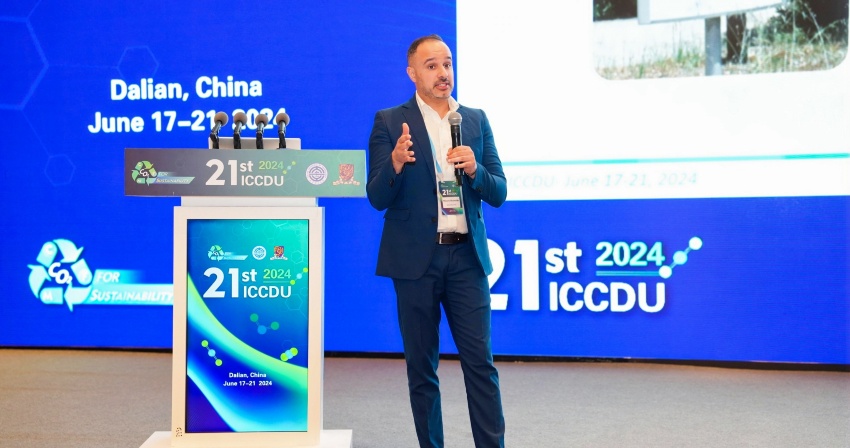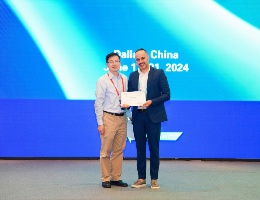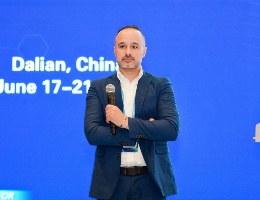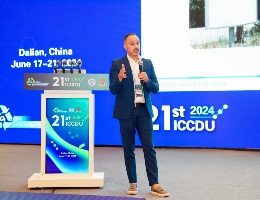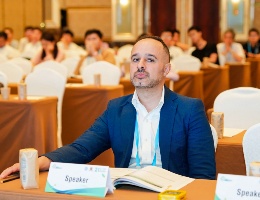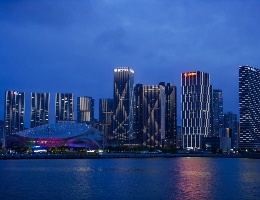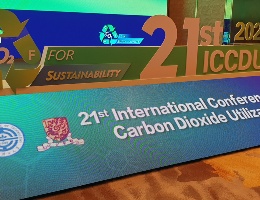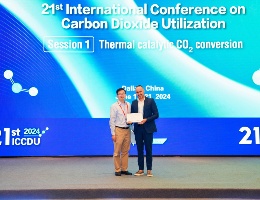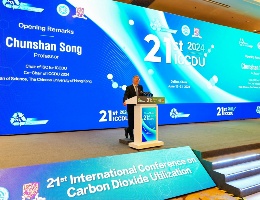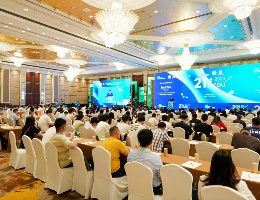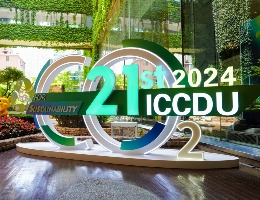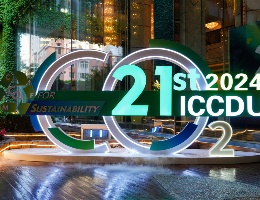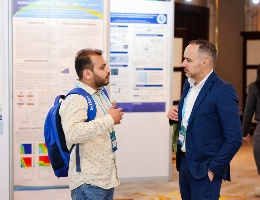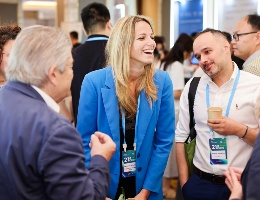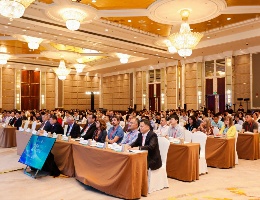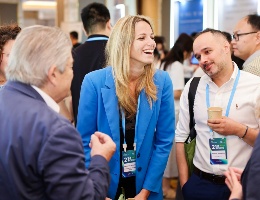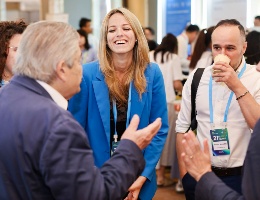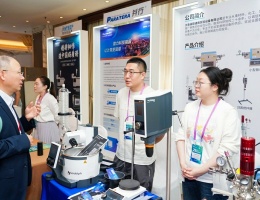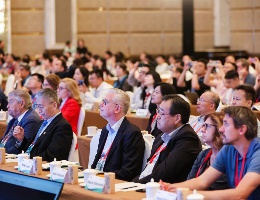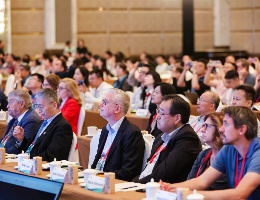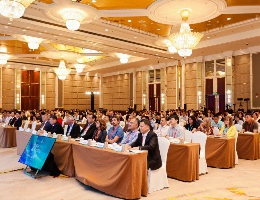How do you (re)use CO2?
The contribution of Sotacarbo highlighted at the 21st edition of the International Conference on CO2 Utilization (June 25th, 2024).
Date:
25 June 2024
A glimpse into the future. In his speech at COP28, the president of the European Council Charles Michel asked for a more incisive and quick global action to contain the global temperature rise within 1.5 degrees. “Earth belongs to our children. It’s not a commercial slogan, but an existential reality. The next decade is fundamental and we’re fully mobilised to collaborate with each one of you in order to protect humanity” says President Michel.
With this in mind, to avoid polluting the environment through carbon dioxide (CO2) emissions everyone is called upon to take responsibility for their consumption by avoiding waste. However, the fight against climate change must also be done by exploiting technological development. The process to reach zero emissions can be sped up thanks to scientific advancements. In this context, CO2 capture, storage and reuse (CCUS) instruments come into the picture. Although the technologies behind CCUS solutions have been tested and are operational in the industry, research and development teams work to keep innovating and updating them.
CCUS technologies will allow to face the process of emission reduction in the “hard-to-abate” sectors (steel, cement, chemical factories, paper and glass industry), to increase the production of low-carbon emission hydrogen and to promote the removal of CO2 already present in the atmosphere through BECCS (BioEnergy with CO2 Capture and Storage) and DAC (Direct Air Capture) systems.
The 21st edition of the International Conference on CO2 Utilization (ICCDU-2024) held in the city of Dalian (China) from June 17th to 21st, 2024, was the center of discussion on the latest innovations, the great development prospects and the positive impact that CO2 recovery and reuse technologies can have in limiting global temperatures.
The conference, held annually, is a great platform to discuss and exchange scientific information to promote the capture and usage of CO2, to mitigate climate change and favor sustainable development. Many important developments took place through recent regional and national initiatives in different countries. For example, China, the country that held the latest conference edition, launched the “30-60 Dual Carbon Goal” in 2020 (carbon peak (CO2) within 2030 and carbon neutrality within 2060), and in the recent years considerable steps have been achieved in research, development and commercialization of technologies for CO2 reuse.
The 21st edition acted as a multi-disciplinary forum, offering a precious opportunity to contribute to and develop a better understanding of the state-of-the-art research on CO2 reuse all over the world. In fact, ICCDU is a meeting point for all players from the industry and academia involving researchers, developers, users and visionaries who discuss on developments and the latest technological solutions for current and future challenges in the field of CO2 reuse. The 2024 edition hosted more than 450 people from over 20 countries with 10 master lectures, 58 keynote lectures, invited lectures, 130 oral communications and more than 80 posters. In four parallel sessions, pioneers and researchers analyzed the current state of technology and of the industry and their respective predictions for the future. The topics of interest on carbon recycling from a circular economy point of view ranged from thermo-catalytic, electrochemical and photochemical conversion of CO2 , to its capture and mineralization, to biotechnological processes of CO2 conversion, without neglecting the political, social and commercial aspects of CO2 reuse.
The result of such discussions highlights the presence of a multitude of technologies that allow to convert CO2and water into methanol or other products, which in turn can be converted into olefins and aromatics, feedstocks of the current petrochemical industry, or be used directly both as fuels and chemicals. Thanks to progress, in the future, it will be possible to implement integrated devices called photoelectrocatalysts or artificial leaves, in which solar energy, water and CO2 will be used directly to produce methane, methanol or other chemicals and/or fuels. Such energy vectors will enable the deferred use of renewable energy, overcoming the current limits of traditional renewable sources. Moving to a circular life cycle of CO2 is therefore a crucial step in achieving an economy that can be defined sustainable.
During the conference, Sotacarbo presented a work titled “An overview of different nanocatalysts for methanol and dimethyl ether production from CO2” (authors: Mauro Mureddu, Sarah Lai, Lorenza Piroddi, Elisabetta M. Usai, Paola Carta, Francesca Ferrara, Alberto Pettinau). The research work, presented by researcher Mauro Mureddu, reported the main results on the development of innovative catalysts for CO2conversion to methanol and dimethyl ether. In particular, it discussed the preparation of materials with high surface development obtained by combining innovative synthesis methods, developed both in-house and in collaboration with the University of Cagliari. The work was met with renewed interest from many experts, who appreciated the quality and the notable innovative contribution of the research also in view of the scale-up - in general terms, the procedure by which a discovery becomes an innovation – of the process on the pilot scale through the realization at the Sotacarbo Centre of the 120 kg per day pilot unit – thanks to funding from the Ministry of Economic Development Electricity System Research (CUP I34I1900570001) – conceived and designed to study the processes for the valorization of CO2 in three main products: methanol, methane and dimethyl ether. Particular interest was caused by the study on the scale-up of the “home-made” catalyst for methanol production, which will enable its use in the prototype plant mentioned above.
At the end of the speech, a certificate was presented by the International Scientific Committee for the contribution of the Sotacarbo lecturer during the conference.
The work is part of the “Advanced Sustainable technologieS for Energy Transition, ASSET” project (CUP D43C22002400002), funded by the Region of Sardinia with the aim of supporting Sotacarbo research towards increasingly innovative solutions in the field of environmental sustainability. MMureddu
Last update
06/11/2024, 12:03

